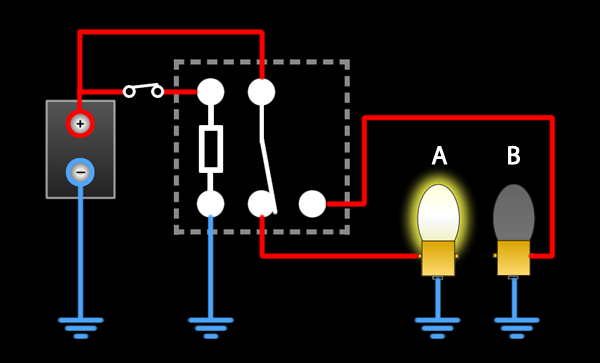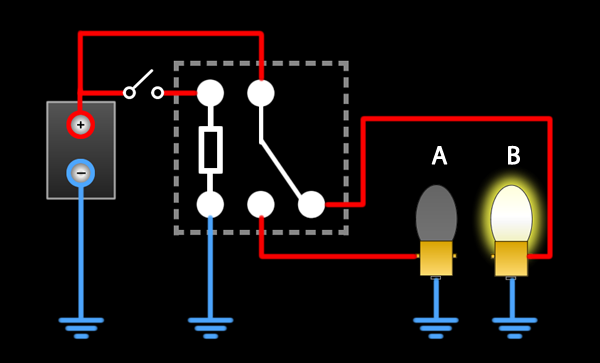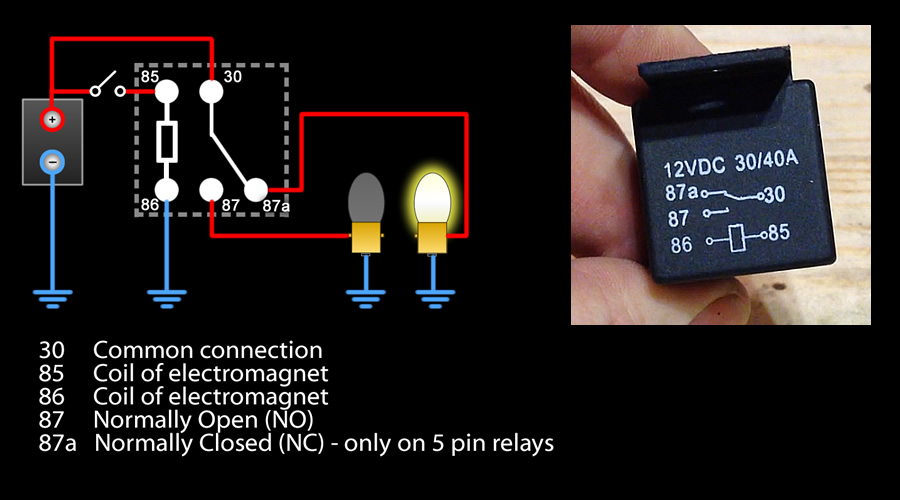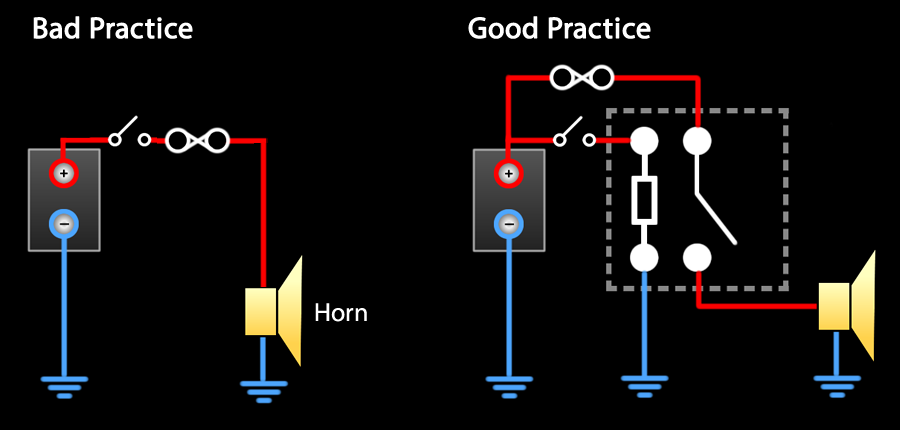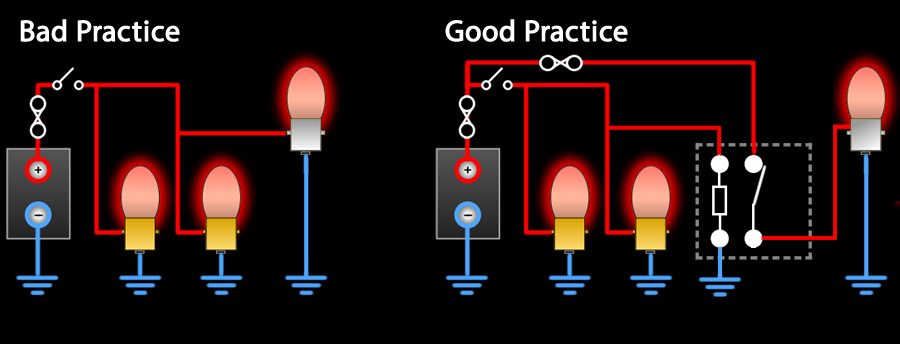Relays in Auto Electrics a basic guide
A Basic Introduction to the Use & Function of Relays
 In this auto electrics Tutorial, I’m going to be looking at Relays, their use and function in vehicle electrical circuits. If you're not familiar with relays, you soon will be. The average vehicle is packed full of them and they're extremely useful. Hopefully what follows will give you more than enough information to comfortably understand and use them.
In this auto electrics Tutorial, I’m going to be looking at Relays, their use and function in vehicle electrical circuits. If you're not familiar with relays, you soon will be. The average vehicle is packed full of them and they're extremely useful. Hopefully what follows will give you more than enough information to comfortably understand and use them.
See the accompanying video here...
To begin, if you’ve got absolutely no idea about auto electrics, then see my Auto Electrics 101 tutorial.
What is a Relay?
A relay is simply an electronic switch. Their purpose is to switch electrical circuits on and off. They come in different sizes and shapes and usually have 4 or more metal lugs or terminals on them.
Here’s a really simple circuit. There’s a battery, a bulb and a switch.
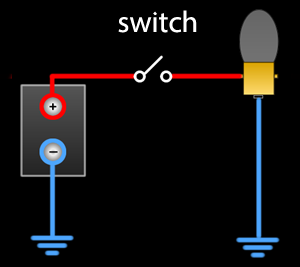
It’s easy to see how when the switch is closed the bulb lights up.
The problem here is, of course, that someone has got to close the switch. What a Relay does is electronically close a switch for you.
Inside a Relay
Relays hold tiny electromagnets. When you place power into them, they created a magnetic field which either attracts or repels a metallic strip that forms the arm of a switch. Historically the standard electronic symbol for a Relay was something like this:

It's easy to see the switch. The coil represents the electromagnet. Imagine that magnet attracting or repelling the arm of the switch above it and you've grasped the workings of a relay.
For this purpose, I’m going to draw my Relays a little differently.
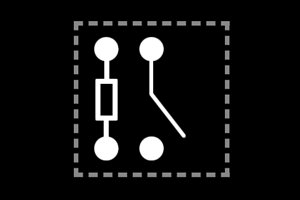
Hopefully it's still obvious which is the magnet and which is the switch. The four large dots represent the terminals of the relay, the small metal lugs that protrude from the plastic shell.
Energising A Relay
To energise the electromagnet inside the relay, it's necessary to connect electric power to the two magnet terminals, in this instance causing the internal switch to close, like this:
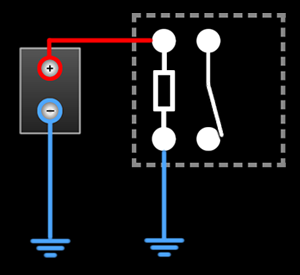
So if we wire bulb and a battery to these switched terminals of the relay, it’s easy to see how the relay can be used to switch the bulb on and off.
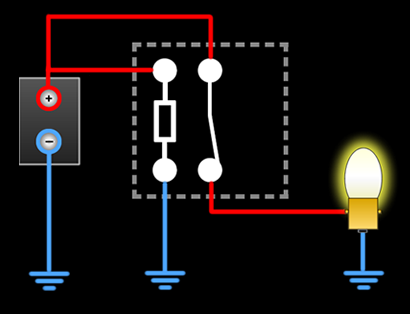
If you've just freaked out, don't... it hasn't suddenly become complicated honestly. Take your time and look what's going on. The only thing that's changed from the previous diagram is the addition of the bulb. The bulb is using the relay as an on/off switch, and this is a relay in its most basic form, what's called a Four Pin Normally Open Relay… four Pins for four terminals and normally open because the switch is open until power is applied to it.
Energise the relay and the switch is closed, lighting the bulb. Disconnect the power to the relay and the bulb and electromagnet turn off.
Open and Closed Relays
There are different types of relay. We've already mentioned the Normally Open relay, so the first obvious variation is the Normally Closed Relay. At first glance there’s no obvious difference, but the difference lies with the internal switch.
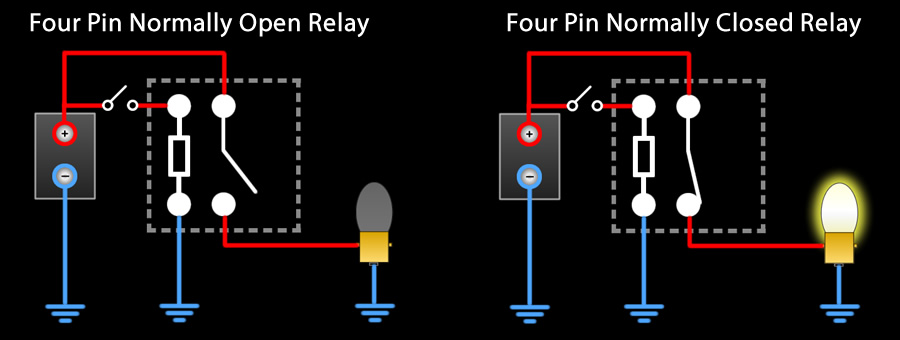
You'll notice in the above diagram that I've introduced what we'll call a master switch into the circuit just before the relay. This master switch will determine whether or not the relay is energised. We can see clearly that when the relay is not energised, when it’s not powered, in a Normally Open Relay the internal switch is open, meaning it cannot power anything (like the bulb). The Normally Closed Relay the internal switch is closed, so this will power the bulb.
Why the difference? Why have a normally open and normally closed? Because sometimes it's useful to have one circuit powered when another is inactive. Imagine a vehicle burglar alarm... you would not want this active whilst the engine was on and you were driving. But when all the other electrics are off and the vehicle is stationary, then that's an ideal time for the alarm to become active, so a normally closed relay might do the job nicely for us... no power energising the electromagnet (engine off) allows the alarm circuits to become powered.

